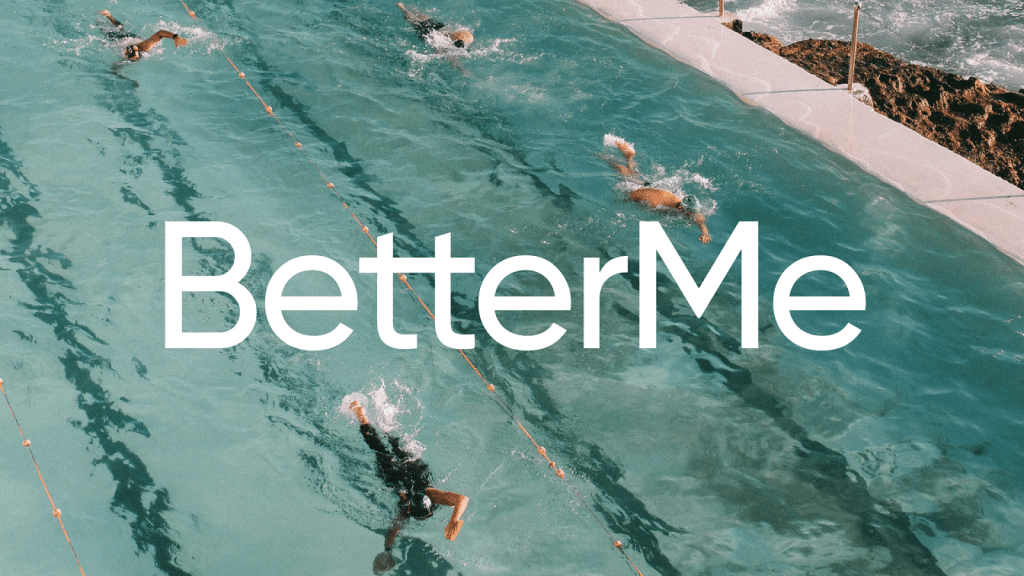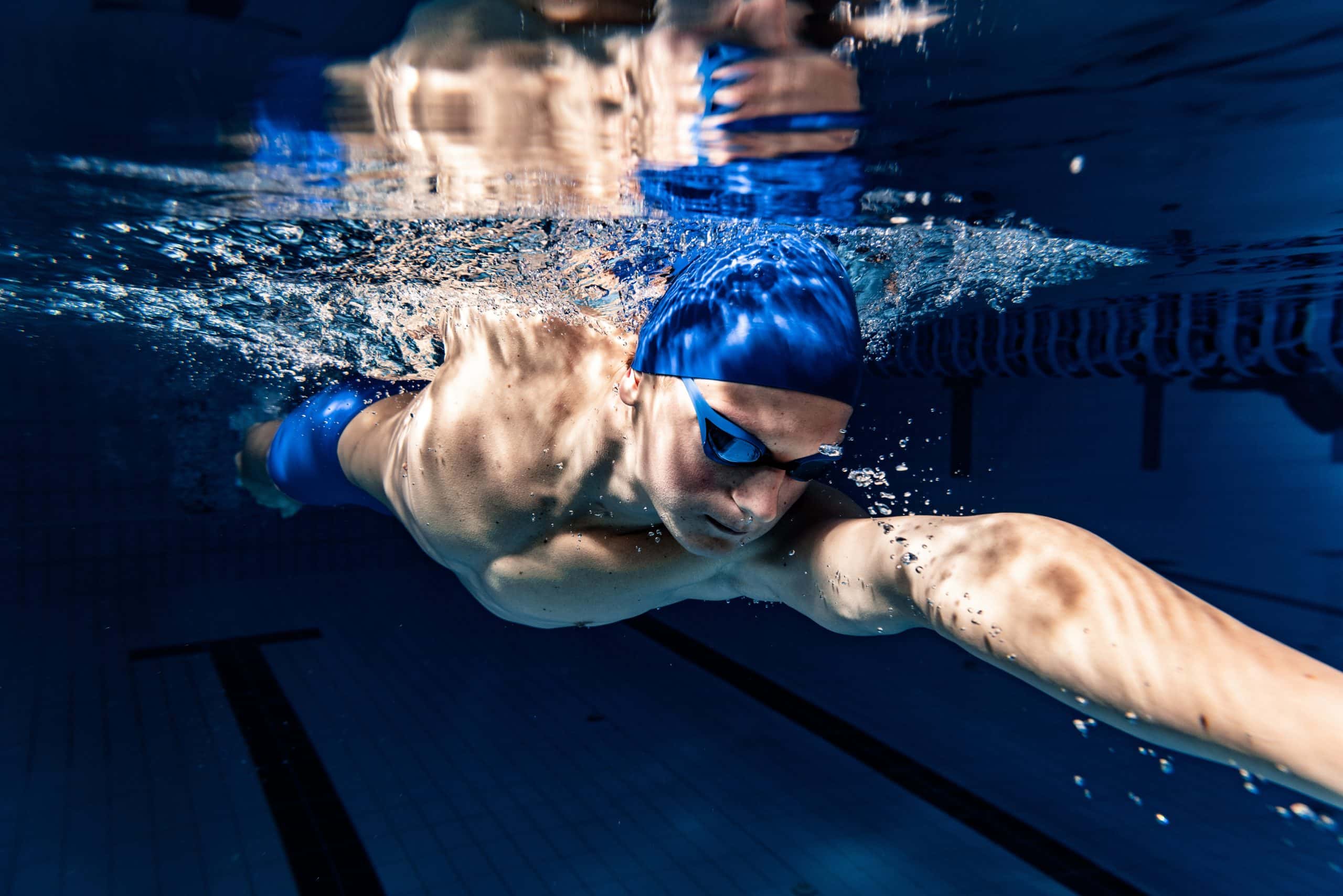If you think of swimming as simply a way to cool off in the summer, or a sport reserved for Olympic-level athletes, think again!
Swimming is a fantastic, low-impact workout that can burn a significant number of calories and improve overall fitness. Whether you’re a former enthusiast, someone looking to get into shape, or just dipping your toes into the water for the first time, paddling your way through a one-mile swim can be a fun and rewarding challenge.
In this article, we will explore how many calories are burned in a one-mile swim, the benefits of swimming, and provide some tips on how you can incorporate swimming into your fitness routine.
How Many Calories Does Swimming 1 Mile Burn?
Swimming is a fantastic total-body workout with the added bonus of burning calories. When you’re swimming 1 mile the calorie burn can be quite substantial.
Let’s look at the numbers. The average calories burned from swimming 1 mile can hover around 531 calories. This number will fluctuate based on your speed, intensity, and individual metabolic rate.
Freestyle, often considered the fastest of the competitive strokes, can increase the calorie burn. The freestyle swimming calories burned can be greater due to the higher intensity and speed of this particular stroke. In fact, the calories burned swimming 1 mile freestyle can be significantly higher than when using other strokes.
BetterMe is your fast-track ticket to a long-lasting weight loss! Tailor your fitness journey and maximize your results with just a couple of swipes!
If we break down the distance, the calories burned swimming a quarter mile, which is about 400 meters or 16 laps in a 25-meter pool, would be approximately one-fourth of the calories you would burn in a mile.
When it comes to swimming laps, the calorie burn can vary widely based on your speed, intensity, and the particular stroke you’re using. However, even at a moderate pace the calories burned swimming laps can be quite impressive.
Lastly, the act of simply being in the water and moving around can contribute to calorie burn. Even if you’re not swimming laps or covering a specific distance, the calories burned while swimming can add up quickly due to the resistance provided by the water.
How Far Do You Need to Swim to Burn 1,000 Calories?
To torch a whopping 1,000 calories through swimming, you’d typically need to swim for about two to three hours at a moderate intensity.
You’d need to cover around 10-20 miles, depending on your swimming speed and intensity, which can be equivalent to about 200 laps in a 50-meter pool. In all honesty, it’s not easy to swim for this long and reach the 1,000-calorie mark.
Here’s a closer look at how it all adds up:
- Moderate Intensity: Swimming at a moderate pace for 30 minutes can burn between 200 and 300 calories. This means that to reach your goal of 1,000 calories you would need to swim for approximately 2.5 to 3 hours.
- Vigorous Intensity: If you step up the pace and swim vigorously, you can burn up to 500 calories in an hour. This means you could achieve your 1,000-calorie goal in about 2 hours.
- Stroke Specifics: Different strokes have different calorie-burning potential. For instance, one hour of freestyle swimming can burn close to 360 calories for a 125-pound person. To hit 1,000 calories, you’d need to keep this up for nearly 3 hours.
Remember, these estimates are averages and the actual number of calories burned will be influenced by factors like your weight, metabolism, and swimming efficiency. But no matter how you slice it, swimming is a powerful way to burn calories and get in great shape.
Read More: Calories Burned Swimming 30 Minutes and How to Use It To Your Advantage
Can I Lose Weight Swimming a Mile a Day?
Swimming a mile a day can be an effective strategy for weight loss. This activity is not only enjoyable but it also engages multiple muscle groups, making it an excellent form of cardio. Here’s how swimming contributes to weight loss:
Creating a Calorie Deficit
A calorie deficit is indeed the cornerstone of weight loss (3). This simply means burning more calories than you consume. When you engage in activities like swimming, your body uses up energy, which is measured in calories.
If you swim a mile each day, while maintaining a healthy and balanced diet, you will likely create a calorie deficit. This deficit, over time, will result in weight loss as your body needs to use stored fats as a source of energy.
Muscle Toning and Increased Metabolism
In addition to creating a calorie deficit, swimming a mile a day can lead to muscle toning and an increased metabolic rate.
Swimming engages a wide range of muscle groups and as these muscles work and strengthen, your metabolic rate increases. A higher metabolism means your body burns calories more efficiently, even when you’re at rest.
Low Impact and Sustainable
Swimming is a low-impact exercise, meaning it’s gentle on the joints and excellent for those with mobility issues or injuries. This makes it a sustainable form of exercise that can be maintained in the long term.
As weight loss is often a gradual process, being able to commit to an activity like swimming daily for an extended time can significantly contribute to your weight loss goals.
BetterMe is your fast-track ticket to a long-lasting weight loss! Tailor your fitness journey and maximize your results with just a couple of swipes!
Swimming is Not Just About Calorie Burn
While burning calories is a significant aspect of any exercise, swimming offers far more benefits beyond calorie burn. It is a comprehensive workout that can greatly contribute to your overall fitness and well-being.
- Cardiovascular Health: Swimming is an excellent cardio exercise. It helps to strengthen your heart and lungs, reducing the risk of heart disease and stroke (6).
- Flexibility: The range of movements involved in swimming can aid in improving flexibility and elongating muscles (6). Swimming for seniors is thus highly recommended.
- Stress Relief: Swimming can be therapeutic. The rhythmic strokes and breath control can have a calming effect, reducing stress and anxiety (1).
- Rehabilitation: If you’re recovering from an injury or surgical procedure, swimming can be a safe way to stay active and support recovery due to its low-impact nature.
- Improved Sleep: Regular swimming can help improve sleep quality, helping you to feel more rested and rejuvenated (2).
If you wish to cinch your waist, tone up your bat wings, blast away the muffin top – our fitness app was created to cater to all your needs! BetterMe won’t give excess weight a chance!
How To Burn 3,500 Calories a Day With Swimming?
Burning 3,500 calories in a single day through swimming is an exceptionally ambitious target, and it’s crucial to approach this figure with a touch of skepticism.
In practical terms, it would require an extraordinary amount of time spent in the pool and an intensity level that might be unsustainable for most people, even elite athletes. It’s crucial to remember that while setting goals is a positive action, they should be attainable, realistic, and safe to maintain overall health and well-being.
Indeed, maximizing your calorie burn during swimming comes down to several factors.
One key factor is the intensity of your workout. High-intensity swimming, such as sprint intervals or incorporating more challenging strokes like butterfly or breaststroke, would significantly increase your calorie burn.
Swimming in colder water may also ramp up your calorie expenditure, as your body works harder to stay warm.
Incorporating strength training exercises into your swim workout, such as using paddles, pull buoys or resistance cords, can help engage more muscle groups and thus burn more calories.
Regular swimming sessions, coupled with a balanced, nutritious diet, will help ensure you’re consistently creating a calorie deficit, leading to weight loss over time. Keep in mind that the goal isn’t necessarily to burn a specific number of calories in one session, but rather to develop a regular exercise habit that contributes to overall health and fitness.
Tips For Swimming and Weight Loss
Swimming is an excellent activity for weight loss as it engages a range of muscle groups while providing a low-impact, enjoyable way to stay fit. Here are some tips to help you maximize your calorie burn in the pool:
- Warm Up: It’s important to “wake up” your muscles before diving into your swim session. Consider warming up with some dynamic stretching or jogging in place before getting into the pool.
- Incorporate Intervals: Adding short bursts of high-intensity swimming is an excellent way to challenge yourself and increase your calorie burn.
- Spice It Up: Don’t be afraid to try different strokes, such as butterfly or breaststroke, or add resistance tools like pull buoys or paddles to your workout. Variety is key for keeping the pool fun and exciting.
- Listen to Your Body: Swimming should be an enjoyable activity that you look forward to doing. If it’s feeling too challenging, take a break or slow down your pace.
- Stay Hydrated: Don’t forget to drink plenty of water throughout your swim session and afterwards. Staying hydrated is essential for overall health and optimal performance in the pool.
Read More: Swimming Workouts For Weight Loss: Why The Work & Tips To Get You Started
FAQs
Why Does Swimming Burn So Many Calories?
Swimming burns a significant amount of calories due to several reasons. First, it is a full-body beach workout with no equipment that engages multiple muscle groups simultaneously. From the core and back muscles to the arms and legs, virtually every part of the body is used during swimming. This widespread muscle engagement leads to a high-calorie burn.
Second, water resistance plays a key role. Water is denser than air, meaning your body has to work harder to move through it compared to land-based exercises. This increased resistance leads to a higher-intensity workout and greater calorie burn.
Lastly, the temperature of the water can also contribute to calorie burn. In cooler water, the body must expend additional energy to maintain a normal body temperature, increasing energy use and thus burning more calories.
Is Swimming a Good Way to Lose Weight?
Yes, swimming is an effective way to lose weight. It’s a low-impact, full-body workout that can help burn a significant number of calories, promote muscle toning, and enhance cardiovascular health.
In addition, swimming provides a great alternative for people who find weight-bearing exercises like running or walking challenging or uncomfortable. However, weight loss also heavily depends on a balanced, nutritious diet and a consistent exercise regimen (8).
While swimming can certainly contribute to a calorie deficit, it should ideally be combined with other healthy lifestyle choices for optimal weight loss results.
Does Swimming Burn Fat or Muscle?
Swimming predominantly burns fat, but like all forms of exercise, it also has the potential to burn muscle if not paired with adequate nutrition and recovery.
The body generally uses fat as the primary source of energy during low to moderate-intensity exercises such as swimming (7). However, during periods of intense physical activity or prolonged exercise without sufficient fuel, the body may start to break down muscle proteins for energy.
To prevent muscle loss, it’s important that swimmers maintain a balanced diet rich in proteins, complex carbohydrates, and healthy fats (4). Post-swim recovery meals should ideally contain both protein (to aid in muscle repair) and carbohydrates (to replenish glycogen stores).
Additionally, incorporating strength training exercises into your routine can help maintain and build muscle mass (5). A typical women’s and men’s Beach Workout would involve pushups, planks, walking lunges, weighted squats, jump squats and an open water swim.
The Bottom Line
Calories burned swimming 1 mile is determined by a myriad of details such as intensity level and technique. Even so, swimming is an excellent form of exercise for weight loss as it engages your core muscles while providing a low-impact workout that’s easy on the joints.
To maximize your calorie burn in the pool, be sure to include intervals of higher intensity swimming, use resistance tools when appropriate, and listen to your body.
DISCLAIMER:
This article is intended for general informational purposes only and does not address individual circumstances. It is not a substitute for professional advice or help and should not be relied on to make decisions of any kind. Any action you take upon the information presented in this article is strictly at your own risk and responsibility!
SOURCES:
- Effects of aquatic exercise on mood and anxiety symptoms: A systematic review and meta-analysis (2022, frontiersin.org)
- Effects of Exercise on Sleep Quality and Insomnia in Adults: A Systematic Review and Meta-Analysis of Randomized Controlled Trials (2021, frontiersin.org)
- Fat loss depends on energy deficit only, independently of the method for weight loss (2007, pubmed.ncbi.nlm.nih.gov)
- Nutritional needs in the professional practice of swimming: a review (2017, ncbi.nlm.nih.gov)
- Strength training: Get stronger, leaner, healthier (2023, mayoclinic.org)
- The effects of aquatic exercise on body composition, physical fitness, and vascular compliance of obese elementary students (2015, ncbi.nlm.nih.gov)
- The Regulation of Fat Metabolism during Aerobic Exercise (2020, mdpi.com)
- Weight-Loss and Maintenance Strategies – Weight Management (2004, ncbi.nlm.nih.gov)
















